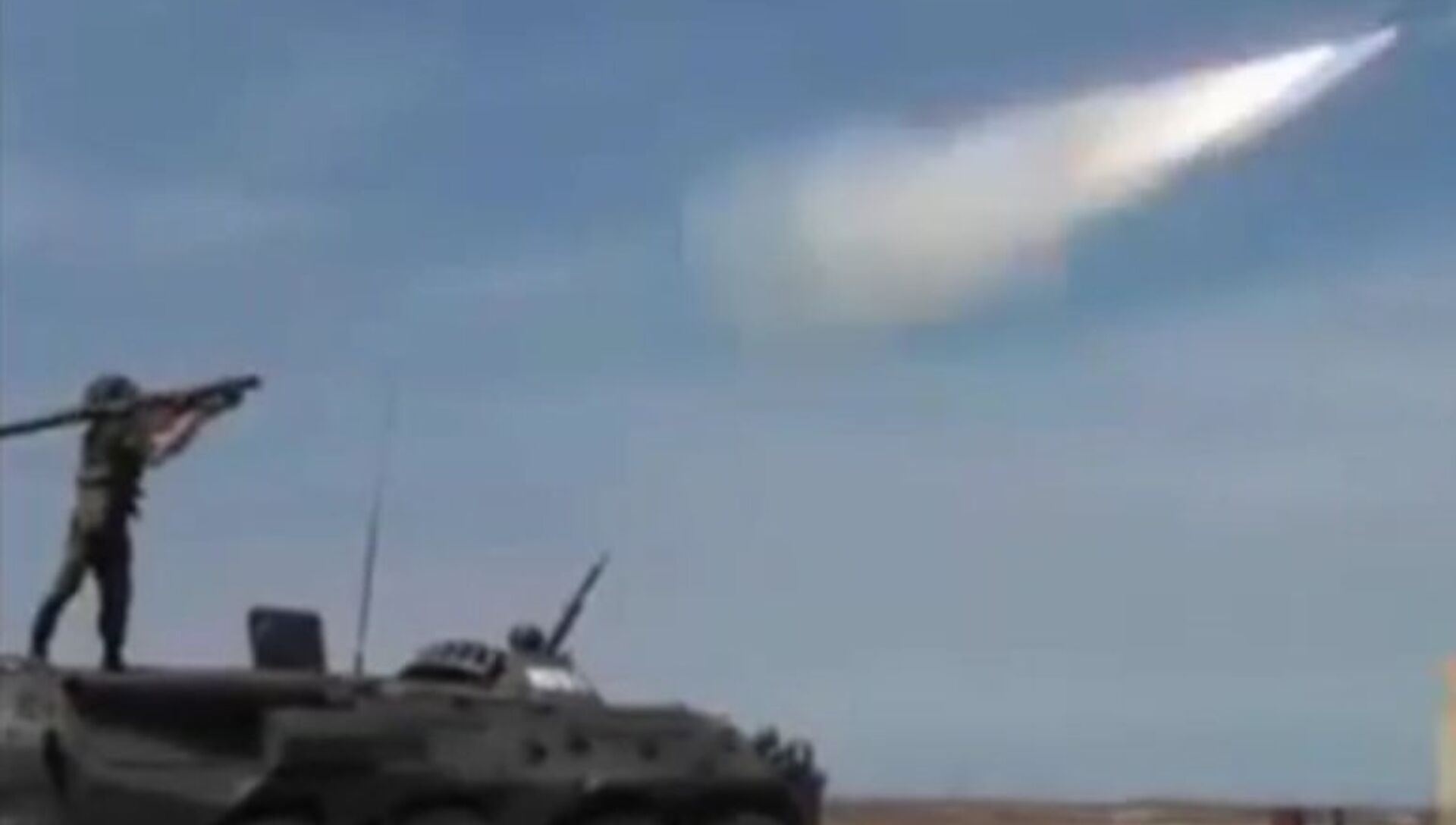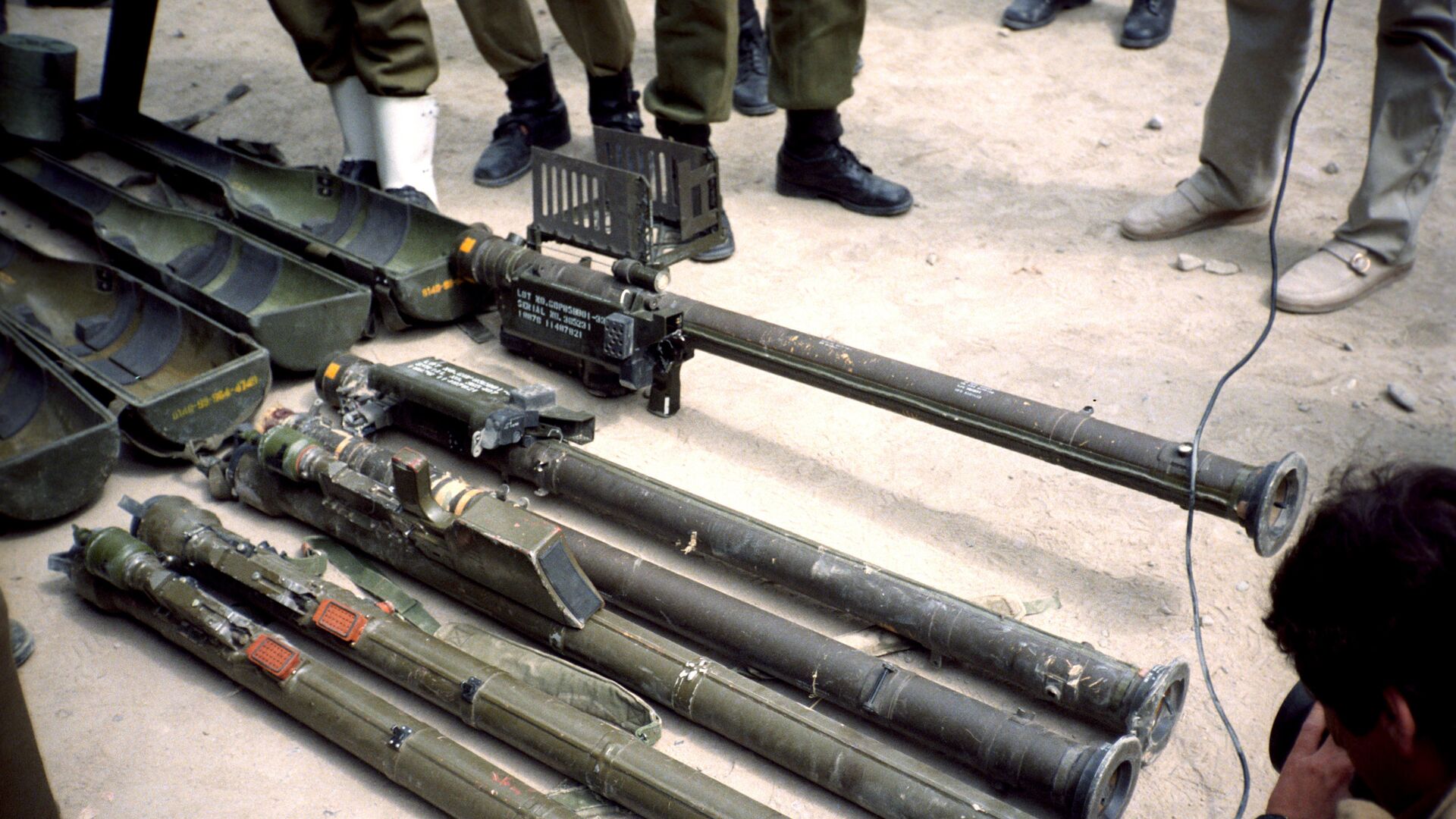https://sputnikglobe.com/20230629/stinger-swindle-why-uss-40yo-manpads-dont-stand-a-chance-against-russia-in-ukraine-1111557329.html
Stinger Swindle: Why US’s 40yo MANPADS Don’t Stand a Chance Against Russia in Ukraine
Stinger Swindle: Why US’s 40yo MANPADS Don’t Stand a Chance Against Russia in Ukraine
Sputnik International
US defense giant Raytheon has had to rely on pensioned-off employees familiar with the Stinger man-portable air defense system’s (MANPADS) production process, bringing them back to help restart manufacturing after a two-decade hiatus in production and deliveries to Ukraine left the US military’s Stinger stocks drained.
2023-06-29T18:44+0000
2023-06-29T18:44+0000
2023-06-29T18:44+0000
military
viktor litovkin
ukraine
russia
raytheon
russian army
air defense systems (manpads)
verba
igla
stinger missiles
https://cdn1.img.sputnikglobe.com/img/105882/97/1058829733_0:0:3103:1745_1920x0_80_0_0_115ed018af2f2ab6d9b8f656335411d2.jpg
Retired Raytheon employees enjoying their golden years have been brought back to train the current workforce to make FIM-92 Stingers, with the MANPADS’ production process so antiquated that its seekers must be assembled by hand, Raytheon President Wesley Kremer has revealed.In an interview with defense media this week, Kremer confided that the US defense giant is pulling old Stinger “test equipment out of warehouses” and literally “blowing the spider webs off them” as a weapon that hasn’t been in demand for decades suddenly finds itself at the heart of a powerful political narrative.Symbolic StingersStingers – envisioned as a favorite weapon of anti-Soviet Mujahedeen ‘freedom fighters’ during the Soviet-Afghan War in the 1980s, returned to the spotlight in 2022, after Washington and its allies sent nearly 3,000 of them to Ukraine.Developed in the 1960s and introduced into the US military in the early 1980s, Stingers are a 15.7 kg, 1.5-meter long portable missile system with a 1-3 kg high explosive fragmentation warhead which detonates on impact. They home in on their target using an infrared homing guidance system, locking on to sources of heat generated by aircraft engines. Their effectiveness is limited when enemy aircraft are equipped with modern countermeasures such as flair dispensers.Operated by over two countries around the world, over a dozen variants of the Stinger were made during their initial production run between 1981 and 2003, including Stingers with improved seekers, better software, and the ability to target drones.Limited Use in American WarsThe US military has had little use for Stingers in the wars it has fought over the past quarter century, Russian military expert Viktor Litovkin pointed out, recalling the US preference for invading, bombing and occupying nations with little to no airpower.Moreover, he recalled, after the US invaded Afghanistan in the 2000s, “they began buying the Stingers that the Taliban had, which the US shipped to the country while [Soviet] forces were there, because they understood that a Stinger in the hands of terrorists could mean catastrophe for any civilian plane.” And so the US stockpile grew and grew.UkraineAccording to Litovkin, the Stingers shipped to Ukraine have not proven as effective as Washington and its allies might like, given Kiev’s propensity for selling off its Western military aid to third countries, plus the countermeasures available aboard Russian fixed wing and rotary aircraft which can disarm these systems.“Furthermore, some of our helicopters are equipped with radioelectronic warfare systems, allowing them to evade Stingers. Therefore Stingers have had had limited success or effect in Ukraine,” Litovkin said.Is Russia's Version of the Stinger Better?Litovkin has personal experience comparing Stingers against Russian MANPADS, recalling how, during a visit to the Moscow Institute of Thermal Technology in Podolsk, the institute’s general designer dropped a Stinger on the ground, breaking it into pieces. Comparable Russian systems aren’t anywhere near as fragile, the observer said.Comparable Russian MANPADS include the 9K38 Igla, also initially fielded in the early 1980s but smaller and lighter than its American counterpart, and the 9K333 Verba, a fourth-gen MANPADS introduced in the mid-2010s, which in addition to UAVs and aircraft can also target cruise missiles at a range up to 6.5 km (below the Stinger’s 8 km) but at higher altitudes (4.5 km vs 3.8 km). The Verba also features a multispectral ultraviolet, near-infrared and mid-infrared optical seeker, making it difficult to evade, and has a 1.5 kg warhead.Man-portable air defense systems like Stingers and Verbas are just one element to an effective air defense system, with other components including mobile vehicle-based missile systems, and long-range, mostly stationary air and missile defenses. Russia has demonstrated the limited effectiveness of all classes of Ukrainian air defense over the past year, targeting military infrastructure across the country, and destroying billions of dollars in Western-provided air and missile defense hardware in massed missile and drone attacks.
https://sputnikglobe.com/20230629/raytheon-calls-in-retired-engineers-to-restart-production-of-stinger-missiles-1111537156.html
https://sputnikglobe.com/20230628/oops-i-did-it-again-biden-calls-ukraine-iraq-twice-in-two-days-1111527843.html
https://sputnikglobe.com/20150825/verba-manpad-1026175878.html
ukraine
russia
Sputnik International
feedback@sputniknews.com
+74956456601
MIA „Rossiya Segodnya“
2023
Sputnik International
feedback@sputniknews.com
+74956456601
MIA „Rossiya Segodnya“
News
en_EN
Sputnik International
feedback@sputniknews.com
+74956456601
MIA „Rossiya Segodnya“
Sputnik International
feedback@sputniknews.com
+74956456601
MIA „Rossiya Segodnya“
stinger missile, stinger, missile, manpads, portable, missile system, rocket, weapon, united states, ukraine, russia
stinger missile, stinger, missile, manpads, portable, missile system, rocket, weapon, united states, ukraine, russia
Stinger Swindle: Why US’s 40yo MANPADS Don’t Stand a Chance Against Russia in Ukraine
US defense giant Raytheon has had to rely on pensioned-off employees familiar with the Stinger man-portable air defense system’s (MANPADS) production process, bringing them back to help restart manufacturing after a two-decade hiatus in production and deliveries to Ukraine left the US military’s Stinger stocks drained.
Retired Raytheon employees enjoying their golden years have been brought back to train the current workforce to make FIM-92 Stingers, with the MANPADS’ production process so antiquated that its seekers must be assembled by hand, Raytheon President Wesley Kremer has revealed.
In an interview with defense media this week, Kremer confided that the US defense giant is pulling old Stinger “test equipment out of warehouses” and literally “blowing the spider webs off them” as a weapon that hasn’t been in demand for decades suddenly finds itself at the heart of a powerful political narrative.
Stingers – envisioned as a favorite weapon of anti-Soviet Mujahedeen ‘freedom fighters’ during the Soviet-Afghan War in the 1980s, returned to the spotlight in 2022, after Washington and its allies sent nearly 3,000 of them to Ukraine.
Developed in the 1960s and introduced into the US military in the early 1980s, Stingers are a 15.7 kg, 1.5-meter long portable missile system with a 1-3 kg high explosive fragmentation warhead which detonates on impact. They home in on their target using an infrared homing guidance system, locking on to sources of heat generated by aircraft engines. Their effectiveness is limited when enemy aircraft are equipped with modern countermeasures such as flair dispensers.
Operated by over two countries around the world, over a dozen variants of the Stinger were made during their initial production run between 1981 and 2003,
including Stingers with improved seekers, better software, and the ability to target drones.
Limited Use in American Wars
The US military has had little use for Stingers in the wars it has fought over the past quarter century, Russian military expert Viktor Litovkin pointed out, recalling the US preference for invading, bombing and occupying nations with little to no airpower.
“They fought in Afghanistan, which had no unmanned aircraft or aviation whatsoever. The same goes for Iraq, Yugoslavia, Libya. Therefore, the need for Stingers disappeared,” the retired Russian Army colonel told Sputnik.
Moreover, he recalled, after the US invaded Afghanistan in the 2000s, “they began buying the Stingers that the Taliban had, which the US shipped to the country while [Soviet] forces were there, because they understood that a Stinger in the hands of terrorists could mean catastrophe for any civilian plane.” And so the US stockpile grew and grew.
According to Litovkin, the Stingers shipped to Ukraine have not proven as effective as Washington and its allies might like, given Kiev’s propensity for selling off its Western military aid to third countries, plus the countermeasures available aboard Russian fixed wing and rotary aircraft which can disarm these systems.
“Furthermore, some of our helicopters are equipped with radioelectronic warfare systems, allowing them to evade Stingers. Therefore Stingers have had had limited success or effect in Ukraine,” Litovkin said.
Is Russia's Version of the Stinger Better?
Litovkin has personal experience comparing Stingers against Russian MANPADS, recalling how, during a visit to the Moscow Institute of Thermal Technology in Podolsk, the institute’s general designer dropped a Stinger on the ground, breaking it into pieces. Comparable Russian systems aren’t anywhere near as fragile, the observer said.
“Secondly, the advantage of our air defense systems is that they target the enemy not only using a thermal infrared beam, but can also be aimed using a laser beam and radio guidance. This gives us more opportunities to hit aerial targets,” Litovkin said.
Comparable Russian MANPADS include the 9K38 Igla, also initially fielded in the early 1980s but smaller and lighter than its American counterpart, and the 9K333 Verba, a fourth-gen MANPADS introduced in the mid-2010s, which in addition to UAVs and aircraft can also target cruise missiles at a range up to 6.5 km (below the Stinger’s 8 km) but at higher altitudes (4.5 km vs 3.8 km). The Verba also features a multispectral ultraviolet, near-infrared and mid-infrared optical seeker, making it difficult to evade, and has a 1.5 kg warhead.

25 August 2015, 16:41 GMT
Man-portable air defense systems like Stingers and Verbas are just one element to an effective air defense system, with other components including mobile vehicle-based missile systems, and long-range, mostly stationary air and missile defenses. Russia has demonstrated the limited effectiveness of all classes of Ukrainian air defense over the past year, targeting military infrastructure across the country, and destroying billions of dollars in Western-provided air and missile defense hardware in massed missile and drone attacks.





